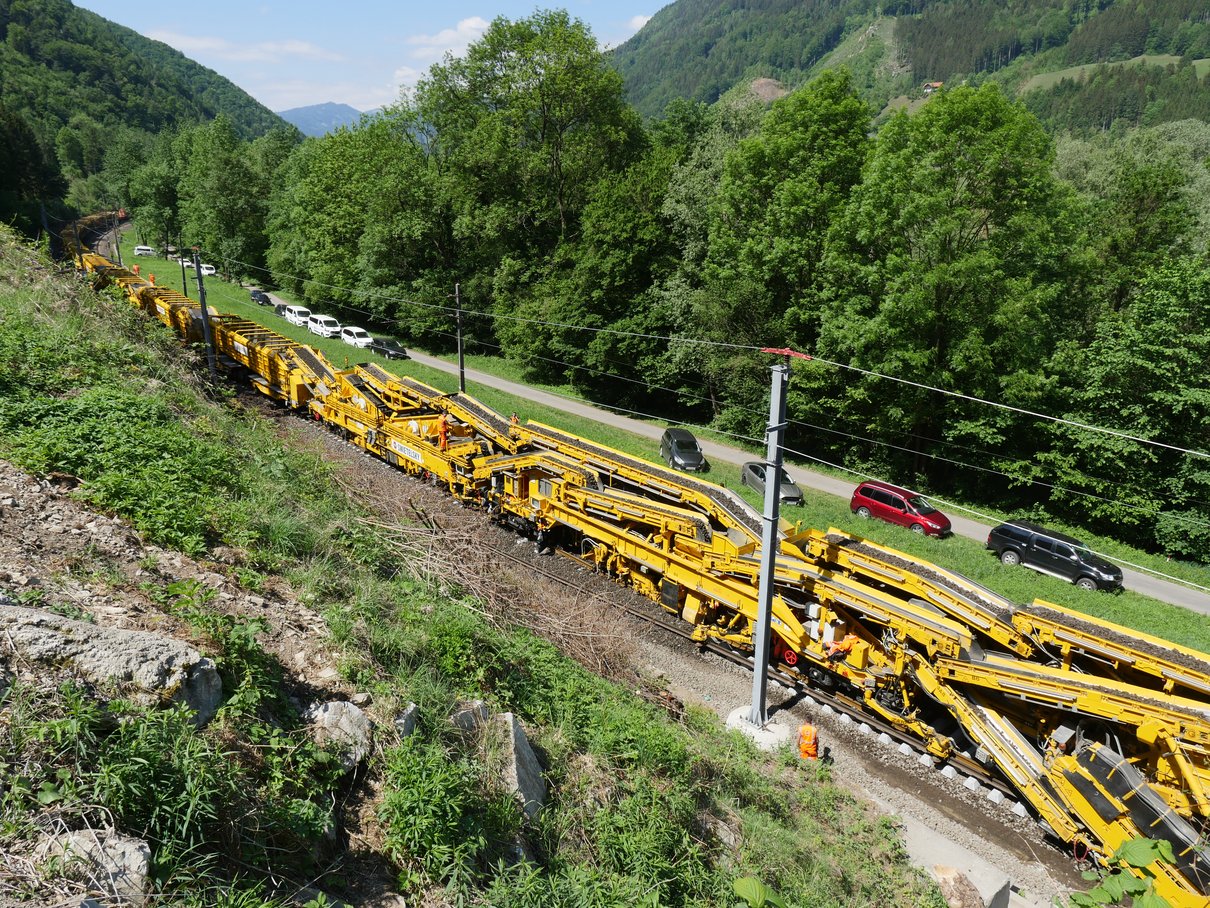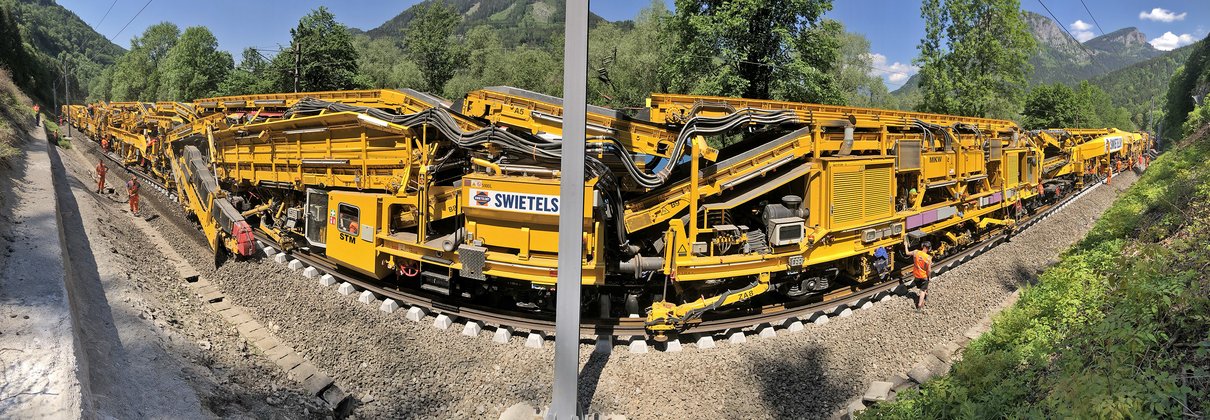After final assembly in the spring of 2019, that summer the RUS 1000 S worked on its first worksites in the Wachau Valley and near the western Austrian city of Dornbirn. In the autumn, it worked in the Arlberg region and was used for a Wiener Lokalbahnen worksite near Traiskirchen in December. These jobs were used to further optimise the machine and to train operating crews, with the goal of achieving target values with the machine’s output. Up to 40 crew members – during regular operation the crew is smaller – used the new machine for training, simulating realistic conditions during daily operation.

“Calibrating the work units individually and as part of a larger whole was a very complex, time-consuming task. However, after just a few kilometres we could tell that the machine was going to meet our requirements. During our training, we managed to renew 1,200 metres in one shift.”
Matthias Schauer, Head of Railway Maintenance Machine Construction, Swietelsky AG
In the spring of 2020, the RUS 1000 S worked on a double-track line with concrete sleepers near Frohnleiten, in southeastern Austrian. This on-site experience helped to further improve the machine’s output, and the ALC automatic guiding computer became fully operational. The digital DRP (data recording processor) records the tamping parameters and track geometry. This means the machine already documents track quality and helps to assess whether the line can reopen for traffic.
A rehabilitation job in Hungary, involving 8,800 m of track, presented the first opportunity to test the new RUS 1000 S during seven days of full operation. The staff confirmed the machine reached its target output of laying ten sleepers per minute. The corrected track geometry was excellent. The crew and the machine were in sync during the job, even achieving a top performance: 1,600 m of track were renewed in ten hours. This means the new machine is now ready for regular operation.
